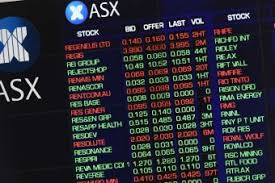Weekly market update - 18th of March 2019
Written and accurate as at: Mar 18, 2019 Current Stats & Facts

It was another relatively quiet week on the ASX, with the index subsiding -0.4%. At a macro level, the yield on 10-year Australian government bonds fell below 2.0% and is closing on the low point of 1.85% reached in mid-2016. This reflects the currently soft sentiment on the Australian economy and the growing belief that rates will need to come down. The AUD ended the week at 70.9 US cents, down from 73 cents at the start of February. With iron ore remaining firm – futures are trading at US$84.7/tonne for 62% fines – the environment remains sound for the miners, which are benefiting from the combination of a relatively weak currency and a strong commodity price.
There was little of note in terms of company-specific news-flow or notable stock performance. The S&P/ASX 300 Metals & Mining sector outperformed over the week, up +0.1%. Financials ex REITs, in contrast, fell -1.2%. The banks gave up between -0.6% (National Australia Bank (NAB)) and -2.8% (ANZ(ANZ)), although UK-based lender CYBG (CYB) bounced +5.0% as the British parliament rejected a 'no-deal' Brexit and sought to kick the can down the road. REITs outperformed, UP +0.7%. The retail REITs generally enjoyed some relief: Scentre Group (SCG) was up +0.3% while Stockland (SGP, +2.8%) and Unibail-Rodamco-Westfield (URW, +2.0%) also outperformed.
Looking specifically at the oil and gas sector in Western Australia. The recent commissioning – following lengthy delays and cost blowouts – of both the Icthys LNG Project and the Prelude Floating LNG platforms in the Browse Basin off Western Australia, represents the end of the tail of projects that came about as part of the last oil and gas capex cycle. The question is now when does the next cycle begin and what does it look like?
Viable greenfield projects are rare, given the lessons learned from the last cycle in terms of cost. However, there will be an increasing focus on developing projects which can use existing infrastructure and LNG chains – and a race to see who can do so soonest. This desire to use current LNG trains, given the embedded capital, is also underpinned by the fact that the fields on which the Prelude and Icthys projects were developed now seem to have smaller gas reserves than initially thought, requiring further upstream sources to justify the cost.
The chain of projects which make up the North West Shelf venture is interesting in this regard. It has been in production since the 1980s and, as existing fields draw near to the end of their lives, there will be material increases in spare capacity from 2021 onwards. For example, the Scarborough project, a JV between Woodside Petroleum (WPL, +1.7%) and BHP (BHP, -0.1%) is likely to get up soonest. It would be an expansion of the existing Pluto LNG project, which commenced production in 2012, expanding the life of this existing infrastructure. The likelihood of the Browse LNG project getting up is more unclear; however if it did it would be much larger than Scarborough, costing something in the region of $20bn versus the proposed $11-12 bn for the latter. Nonetheless, there may be a need for an upturn in LNG development capex but it may not be of the scale as some people are hoping for albeit this could provide a positive for Santos (STO, +3.7%) supported by the possibility of some domestic gas shortages in WA as gas production from existing fields decline.










